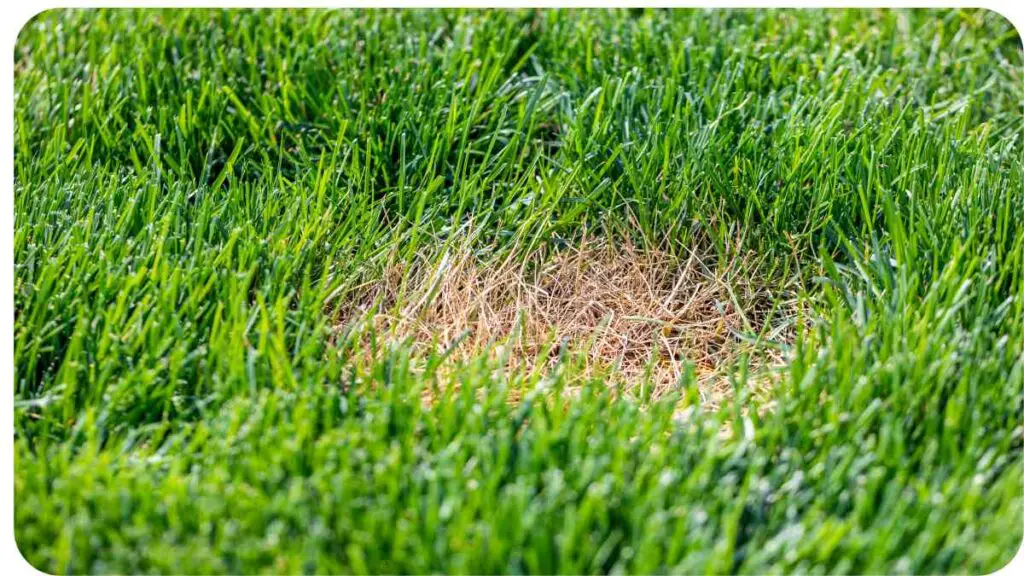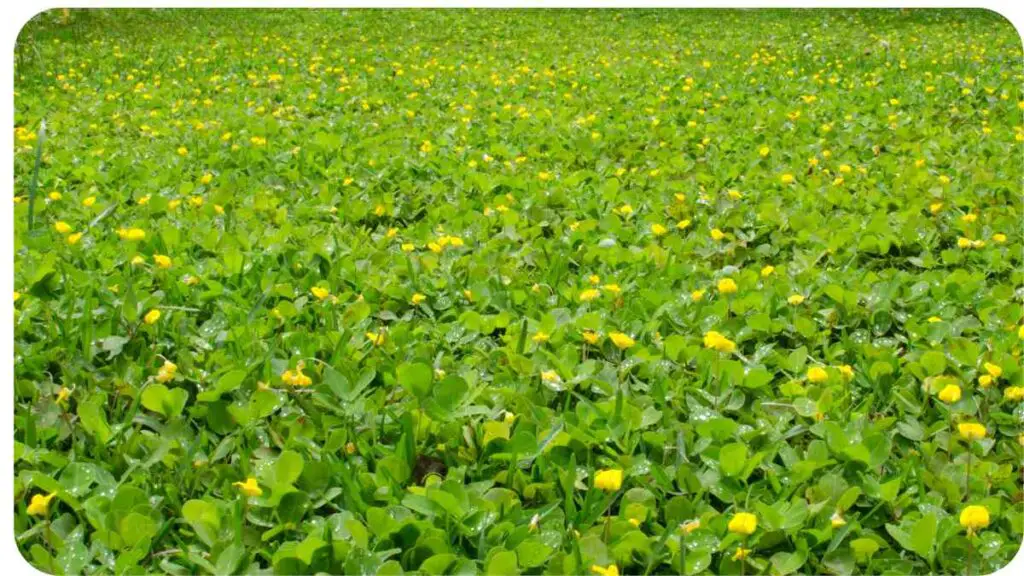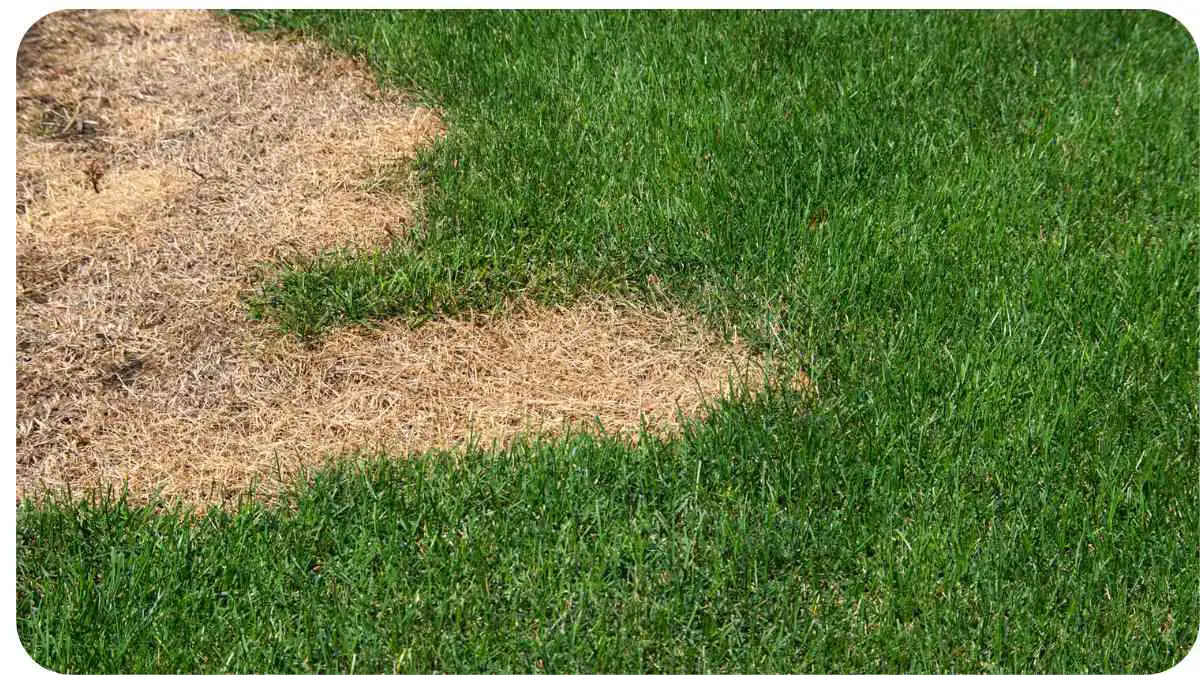Have you ever walked through a garden and noticed those annoying dead patches in the ground cover? It’s like finding a hole in your favorite sweater unsightly and frustrating! Dead spots in ground cover plants can be a real eyesore and a headache for gardeners. But fear not! We’re going to dig deep into this issue and figure out how to get your garden looking lush and even again.
Dead spots can pop up for various reasons, and it’s essential to understand what’s causing them before you can fix the problem. In this article, we’ll break down the common causes of these pesky patches, how to identify problem areas, and the best solutions to get your ground cover back on track. Ready to get your hands dirty? Let’s dive in!
| Key Takeaway |
|---|
| Understanding the common causes of dead spots in ground cover plants helps in diagnosing and addressing issues effectively. |
| Improving soil quality through amendments like compost and proper pH adjustments can revitalize struggling ground cover plants. |
| Adjusting watering practices to suit your plants’ needs and using systems like drip irrigation can prevent issues related to over or underwatering. |
| Choosing the right ground cover plants for your climate and soil conditions is crucial for maintaining a healthy garden. |
| Regular maintenance, including weeding, pruning, and monitoring for diseases, helps in preventing and managing dead spots. |
| Implementing preventive measures such as proper planting techniques and routine inspections can reduce the risk of future dead spots. |
| Learning from real-world case studies and expert advice provides practical insights into effective ground cover management. |
Common Causes of Dead Spots

Environmental Factors
Mother Nature can be both a gardener’s best friend and worst enemy. Environmental factors like too much sun, not enough shade, or even a nasty cold snap can wreak havoc on your ground cover plants. For instance, if a plant that thrives in the shade is suddenly exposed to too much sunlight, it’s likely to get scorched, leaving behind those dreaded dead spots.
On the flip side, too much moisture can lead to fungal infections, which can cause patches of your ground cover to die off. Finding the right balance of sun, shade, and water is key to preventing these environmental issues.
Proper soil drainage is crucial for healthy ground cover. If you’re dealing with soggy garden beds, check out solutions for soil drainage to keep your plants thriving and prevent dead spots.
Poor Soil Quality
Another major culprit behind dead spots is poor soil quality. Think of soil as the foundation of your plants if the foundation is weak, everything built on top of it will eventually crumble. Compacted soil, lack of nutrients, or incorrect pH levels can lead to weak, unhealthy plants that are prone to developing dead spots. It’s essential to know your soil and provide the necessary amendments to keep it in tip-top shape.
Inadequate Watering
Water is life, but too much or too little can be a killer for your ground cover plants. Inconsistent watering practices can cause stress to the plants, leading to dead spots. Overwatering can drown the roots, while underwatering can cause the plants to dry out and die. Both scenarios create the perfect environment for dead spots to emerge.
Table: Environmental Factors Leading to Dead Spots
| Environmental Factor | Impact on Ground Cover Plants | Solution |
|---|---|---|
| Excessive Sunlight | Scorching and burning of leaves, leading to dead patches | Provide shade or choose sun-tolerant plants |
| Insufficient Shade | Weak growth and susceptibility to diseases | Add shade structures or plant in shaded areas |
| Cold Weather | Frost damage that kills off sections of the ground cover | Use frost blankets or choose cold-hardy varieties |
| Overwatering | Root rot and fungal infections leading to dead spots | Improve drainage and adjust watering schedule |
| Underwatering | Dehydration of plants causing them to die off | Increase watering frequency, especially in hot weather |
Identifying Problem Areas
Signs of Trouble in Ground Cover
Spotting dead patches in your ground cover might seem straightforward, but recognizing the early warning signs can help you prevent them from spreading. Look out for yellowing leaves, wilting, or thinning areas in your ground cover. These are often the first indicators that something is off, and if caught early, you can address the issue before it gets out of hand.
Uneven lawn growth can be frustrating. For practical advice on identifying and fixing these issues, explore troubleshooting uneven lawn growth and ensure your ground cover flourishes evenly.
Differentiating Between Normal and Problematic Spots

Not every brown patch in your garden is a cause for concern. Sometimes, ground cover plants naturally go through a phase where they shed old growth to make way for new leaves. However, if you notice these spots spreading or if the plants around them start to decline as well, it’s time to take action.
Effective Solutions for Dead Spots
Improving Soil Quality
When it comes to fixing dead spots, improving soil quality is often the first step. You can think of your soil as the bedrock of your garden without a strong foundation, everything else will struggle. Start by testing your soil to determine its pH level, nutrient content, and texture. If your soil is compacted, consider aerating it to allow better air and water flow. Adding organic matter like compost or well-rotted manure can also help improve soil structure and provide essential nutrients.
If your soil’s pH is off, adjust it by adding lime to raise the pH or sulfur to lower it. The right soil amendments can breathe new life into your ground cover plants, helping them to recover and thrive.
Adjusting Watering Practices
Watering seems simple, but it’s one of the most common reasons behind dead spots. Both overwatering and underwatering can cause stress to your ground cover plants. The key is to find a watering routine that suits your specific plants and climate.
For example, in areas with high temperatures, you may need to water more frequently to prevent your ground cover from drying out. On the other hand, in cooler, more humid climates, overwatering can lead to fungal issues. Using a drip irrigation system can help deliver water directly to the roots, reducing the risk of disease and ensuring your plants get the right amount of moisture.
Wilting plants, even with regular watering, might indicate underlying problems. Discover solutions for wilting plants to help resolve issues and restore vibrant growth in your garden.
Table: Soil Amendments to Revitalize Ground Cover
| Soil Issue | Recommended Amendment | Benefits |
|---|---|---|
| Compacted Soil | Organic matter (compost, manure) | Improves soil structure and aeration |
| Nutrient Deficiency | Balanced fertilizer or compost | Replenishes essential nutrients |
| Incorrect pH Level | Lime (to raise pH) or sulfur (to lower pH) | Balances pH for optimal plant growth |
| Poor Drainage | Sand or perlite | Enhances soil drainage |
| Lack of Organic Matter | Leaf mold, peat moss | Increases soil fertility and water retention |
Preventing Future Dead Spots
Proper Planting Techniques
Prevention is always better than cure, and when it comes to dead spots in your ground cover, proper planting techniques are crucial. Start by selecting the right plants for your specific climate and soil type. Planting at the correct depth and spacing will also help ensure that your ground cover has enough room to grow and access the nutrients it needs.
When planting, make sure to water the plants thoroughly and mulch around them to retain moisture and suppress weeds. These simple steps can go a long way in preventing future dead spots and keeping your garden looking lush and healthy.
Regular Maintenance
Like any other part of your garden, ground cover plants require regular maintenance to stay healthy. This includes routine watering, fertilizing, and pruning to remove dead or diseased growth. Regularly inspect your plants for signs of trouble, such as yellowing leaves or thinning patches, so you can address issues before they become serious problems.
Weeding is also an essential part of ground cover maintenance. Weeds can compete with your plants for nutrients and water, leading to dead spots. Keep your garden weed-free to ensure your ground cover thrives.
Table: Preventive Measures to Avoid Dead Spots
| Preventive Measure | How It Helps | Best Practices |
|---|---|---|
| Proper Plant Selection | Ensures plants are suited to the environment | Choose plants based on climate and soil type |
| Correct Planting Depth | Promotes healthy root growth | Plant at the recommended depth for each species |
| Regular Watering | Prevents dehydration and stress | Water consistently, using a drip system for best results |
| Mulching | Retains moisture and suppresses weeds | Apply a layer of organic mulch around plants |
| Weed Control | Reduces competition for nutrients | Regularly remove weeds, especially in spring and summer |
Choosing the Right Ground Cover Plants

Hardy Varieties for Various Climates
One of the best ways to prevent dead spots in your ground cover is to choose plants that are well-suited to your local climate. Hardy ground cover plants are more resilient and can better withstand environmental stresses like extreme temperatures, drought, and heavy rainfall.
For example, if you live in a hot, dry climate, consider using drought-tolerant plants like sedum or thyme. In contrast, if you live in a cooler, wetter climate, ground covers like moss or ajuga might be more appropriate. Selecting the right plants for your region will reduce the likelihood of dead spots and make your garden easier to maintain.
Uneven mulch distribution can lead to patchy ground cover. For tips on ensuring consistent mulch application, refer to even mulch distribution and maintain a lush and healthy garden bed.
Table: Recommended Ground Cover Plants Based on Climate Zones
| Climate Zone | Recommended Ground Cover Plants | Key Characteristics |
|---|---|---|
| Hot, Dry (Zone 9-11) | Sedum, Thyme, Ice Plant | Drought-tolerant, low maintenance |
| Cool, Wet (Zone 4-7) | Ajuga, Moss, Sweet Woodruff | Moisture-loving, shade-tolerant |
| Temperate (Zone 6-8) | Creeping Phlox, Periwinkle, Pachysandra | Versatile, thrives in partial shade |
| Coastal (Zone 8-10) | Beach Strawberry, Seashore Paspalum | Salt-tolerant, handles sandy soils |
| Mountainous (Zone 3-5) | Bearberry, Alpine Strawberry | Cold-hardy, tolerates rocky soils |
Real-World Success Stories
Lessons from the Field: Case Studies
Real-life success stories can be incredibly motivating and educational. Take, for instance, the case of a homeowner in Arizona who struggled with dead spots in their sedum ground cover. By adjusting the irrigation system to a more consistent drip method and incorporating organic mulch, they were able to restore their garden to a lush, vibrant state.
Another example is a community garden in Oregon that faced challenges with moss ground cover due to excessive foot traffic. The solution was to install stepping stones in high-traffic areas and supplement the soil with a nutrient-rich compost mix, which revitalized the moss and prevented future dead spots.
Table: Case Study Summary of Successful Ground Cover Restoration
| Location | Ground Cover Type | Problem | Solution | Outcome |
|---|---|---|---|---|
| Arizona (Hot, Dry) | Sedum | Inconsistent watering, dry spots | Drip irrigation, organic mulch | Lush, even ground cover |
| Oregon (Cool, Wet) | Moss | Excessive foot traffic | Stepping stones, compost amendment | Healthy, resilient moss |
| Texas (Hot, Humid) | Asian Jasmine | Poor soil quality, yellowing leaves | Soil testing, pH adjustment, fertilization | Vibrant, green ground cover |
Expert Tips for Thriving Ground Cover
Insights from Professional Gardeners
When it comes to ground cover, the experts know best. I reached out to several professional gardeners for their top tips on maintaining healthy, vibrant ground cover plants. One recurring piece of advice was the importance of soil health. As landscape architect Jane Mitchell from Denver points out, “Healthy soil is the foundation of any successful garden. Regularly testing and amending your soil will save you a lot of headaches down the road.”
Another expert, Michael Rivera, a horticulturist from Florida, emphasized the importance of plant diversity. “Mixing different types of ground cover plants not only creates a more interesting landscape but also helps prevent widespread issues like dead spots.”
If your automatic sprinkler system isn’t working as it should, identifying common issues is essential. Learn more about sprinkler activation problems and keep your garden well-watered and thriving.
Table: Expert Tips for Maintaining Healthy Ground Cover
| Expert Name | Location | Tip | How It Helps |
|---|---|---|---|
| Jane Mitchell | Denver, CO | Focus on soil health | Promotes strong, resilient plant growth |
| Michael Rivera | Miami, FL | Mix different types of ground cover | Reduces the risk of widespread issues |
| Lisa Thompson | Seattle, WA | Mulch regularly | Retains moisture, suppresses weeds |
| David Chen | Los Angeles, CA | Choose the right plants for the climate | Ensures long-term success |
| Rachel Adams | Austin, TX | Use a drip irrigation system | Provides consistent moisture |
Frequently Asked Questions (FAQs)
Addressing Common Concerns
Dead spots in ground cover plants can raise a lot of questions, especially for new gardeners. Below, I’ve answered some of the most frequently asked questions to help you troubleshoot and prevent these issues.
Table: Quick Solutions for Common Ground Cover Issues
| Question | Quick Solution | Additional Tips |
|---|---|---|
| Why are my ground cover plants turning yellow? | Check for nutrient deficiency, adjust pH | Use a balanced fertilizer, test soil pH |
| How can I prevent dead spots from spreading? | Remove affected areas, improve soil health | Regularly inspect plants, adjust watering |
| What’s the best way to water ground cover? | Use drip irrigation or soaker hoses | Water early in the morning, avoid overhead watering |
| Can dead spots be completely revived? | Yes, with proper care and attention | Focus on soil amendments, consistent watering |
| What ground cover plants are best for full sun? | Sedum, creeping thyme, ice plant | Ensure they are drought-tolerant |
Conclusion
Addressing and preventing dead spots in your ground cover plants requires a combination of understanding the underlying issues, applying effective solutions, and practicing ongoing maintenance. By focusing on soil quality, watering practices, and selecting the right plants for your specific climate, you can transform problematic areas into thriving green spaces.
Remember, the key is to take a proactive approach. Regularly inspect your garden, make necessary adjustments to your soil and watering regimen, and choose ground cover plants suited to your environment. This not only helps in managing current issues but also prevents future problems, ensuring that your ground cover remains healthy and vibrant.
Gardening is as much about patience and observation as it is about action. With the right strategies and a bit of perseverance, your garden can be a lush, vibrant haven, free of unsightly dead spots.
Further Reading
Ground Cover Diseases – Morton Arboretum
This resource from Morton Arboretum provides an overview of common diseases that affect ground cover plants. It includes practical tips for identifying symptoms and managing these issues to keep your garden healthy.
Ground Cover for Pastures – DPI NSW
This PDF guide from DPI NSW covers the use of ground cover plants in pasture management. It offers insights into selecting suitable ground covers for different soil types and climates, along with management practices.
Ground Cover Plants – ScienceDirect
This ScienceDirect article explores various types of ground cover plants and their applications. It provides scientific insights into the benefits of ground cover and factors influencing plant health and growth.
FAQs
What are the most common causes of dead spots in ground cover plants?
Dead spots can be caused by environmental factors like excessive sun or poor soil quality. Inconsistent watering practices, such as over or underwatering, also contribute to the problem. Identifying the cause is crucial for effective treatment.
How can I improve the soil quality for my ground cover plants?
Improving soil quality involves testing for pH levels, adding organic matter like compost, and ensuring proper drainage. Aerating the soil and adjusting nutrient levels can also enhance soil health and support robust plant growth.
What are the best watering practices for preventing dead spots?
The best watering practices include using a consistent watering schedule that matches the needs of your ground cover plants. Drip irrigation systems can help deliver water directly to the roots, minimizing issues related to over or underwatering.
How can I prevent dead spots from occurring in the future?
To prevent dead spots, choose ground cover plants suited to your local climate and soil conditions. Implement regular maintenance, such as proper watering, soil amendments, and weed control, to keep your plants healthy and vibrant.
Are there specific ground cover plants that are more resilient to common issues?
Yes, certain ground cover plants are more resilient to common issues like drought or disease. For example, sedum and creeping thyme are known for their drought tolerance, while ajuga and moss can thrive in cooler, shaded areas.

Hi! My name is Hellen James, and I’m a landscape designer in Los Angeles. I’ve been working with homeowners and businesses to help them improve the look of their properties for over 10 years.

